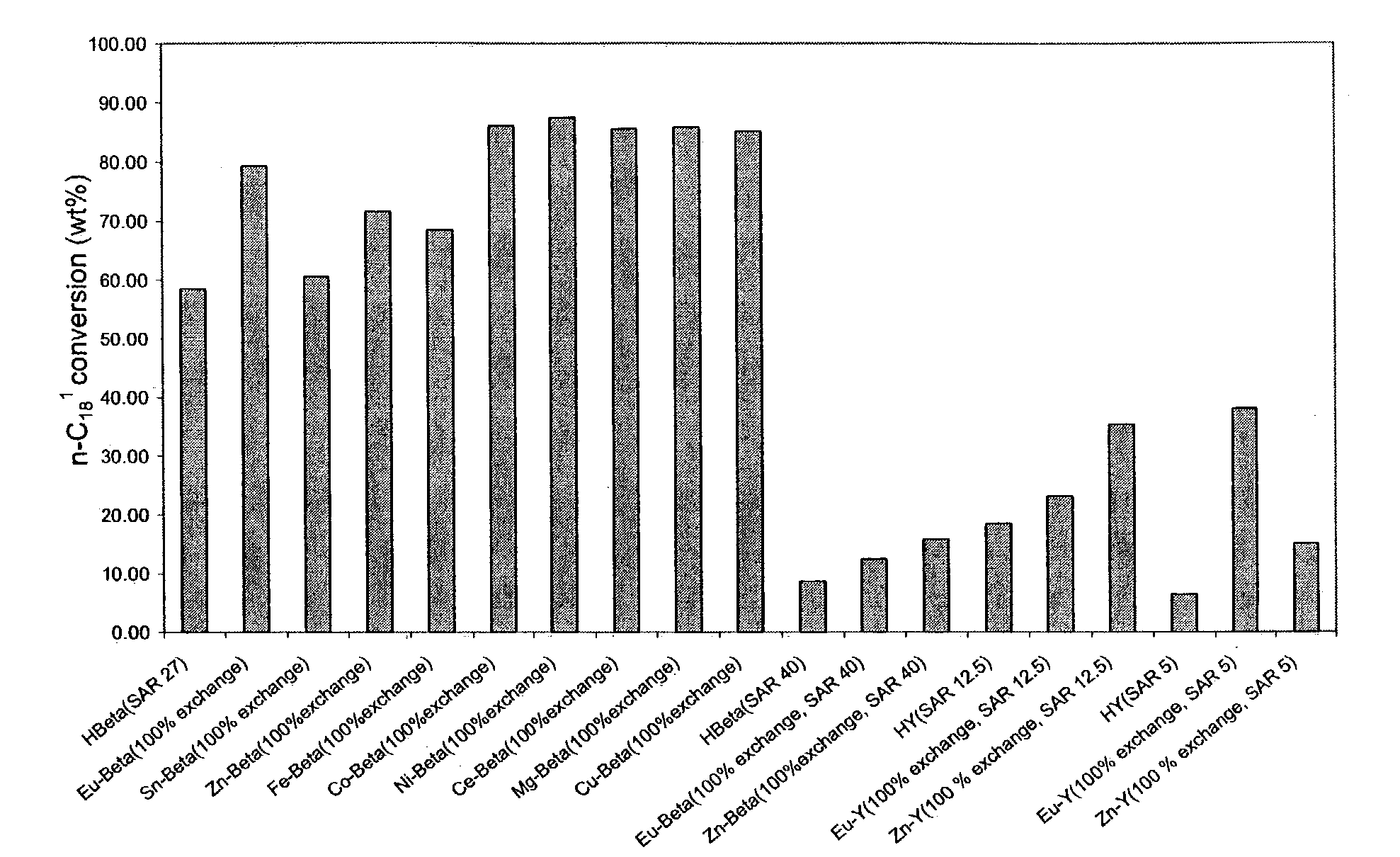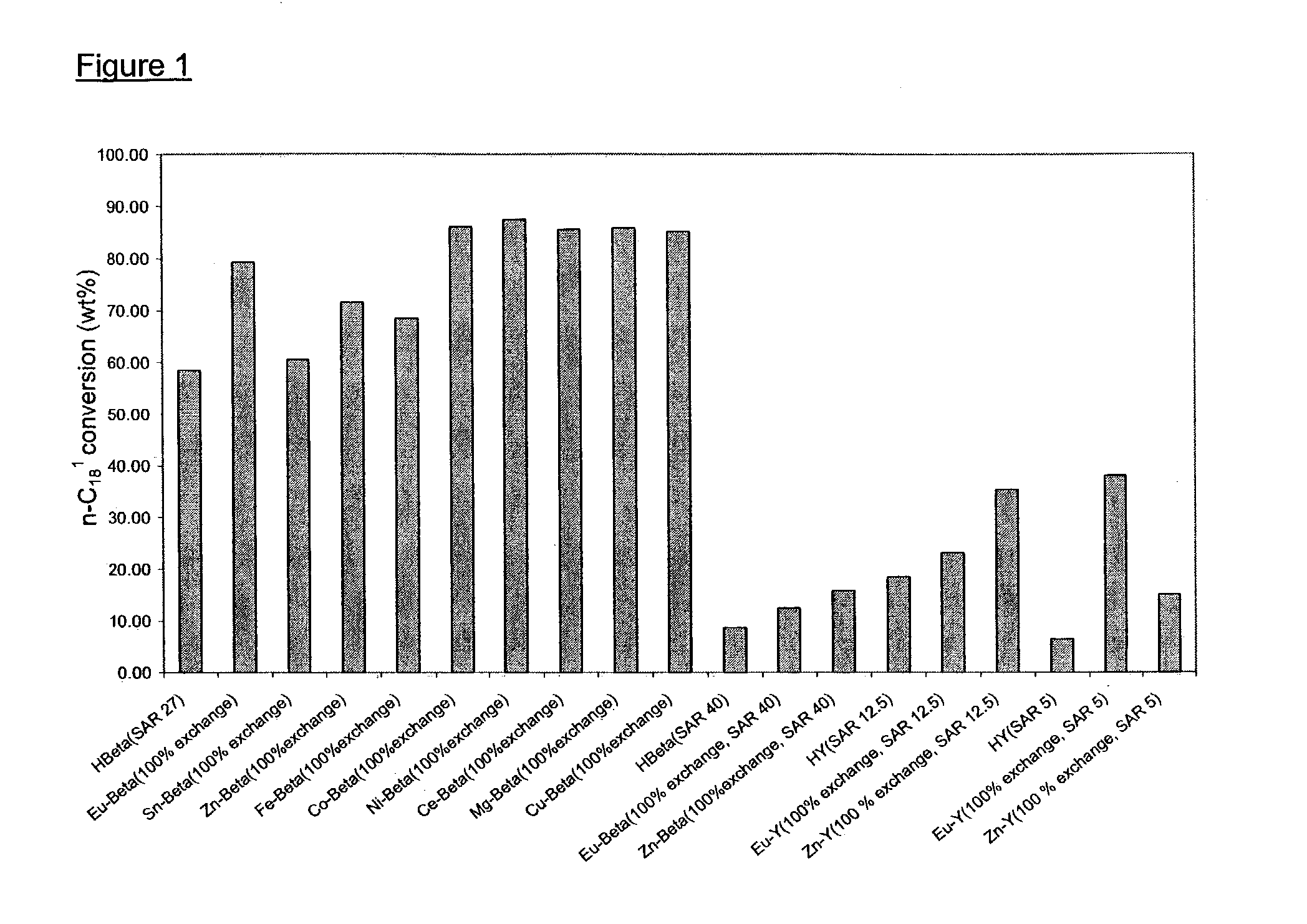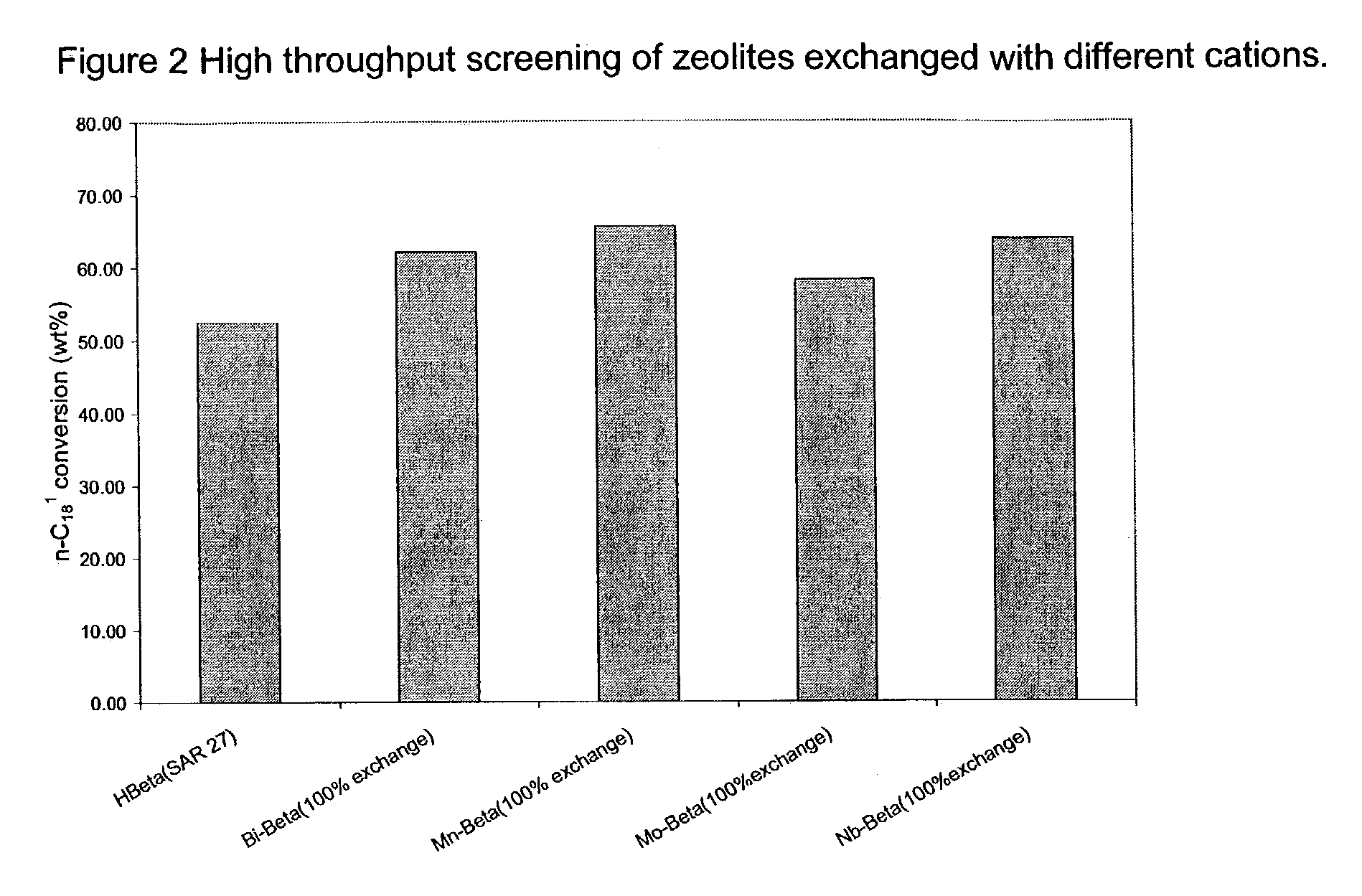Metal ion exchanged solid materials as catalysts for the skeletal isomerization of fatty acids and alkyl esters thereof
a technology of metal ion exchange and solid materials, which is applied in the preparation of fatty acids, physical/chemical process catalysts, carboxylic compound preparations, etc., can solve the problems of unnatural materials, large amount of undesired side products containing oligomers, and difficult processing in a number of applications
- Summary
- Abstract
- Description
- Claims
- Application Information
AI Technical Summary
Problems solved by technology
Method used
Image
Examples
example 1
Fatty Acid Ester Isomerization
[0048]Two grams of Cu2+ exchanged Beta catalyst (Si / Al=27, powder, 550° C. calcined in air) and 20 g of methyl oleate were loaded into a 135 ml autoclave reactor under nitrogen. After sealed, the reactor was purged with nitrogen. A nitrogen pressure of 50 psig was approached at room temperature. With an active stirring at 1000 RPM, the mixture of methyl oleate and the catalyst was heated up to 250° C. within 30 minutes and maintained for 2 h. After cooled down to room temperature within 20 minutes, the mixture was taken out of the reactor and the liquid product was separated from the solid catalyst by filtration. Results based on GC analysis show that 80% of methyl oleate was isomerized. The product composition is shown in Table 1.
[0049]
TABLE 1Example10i-C12C12i-C14C141C14i-C16C161C16i-C18C181C18otherFeed0.830.3800.210.542.40.945.464.821.8475.931.555.110.260.421.550.620.002.414.610.966.5051.2315.414.2311.80
example 2
[0050]In a high throughput batch reactor system, five catalysts were tested. Catalysts 2, 4 and 5 represent the technology of the present invention, while examples 1 and 3 are not metal exchanged catalysts. In each reactor, 0.05 g of catalyst and 1 g of methyl oleate were loaded. After sealed, the reactor system was purged with nitrogen. A nitrogen pressure of 100 psig was approached at room temperature. With an active stirring, the mixture of methyl oleate and the catalyst was heated up to 250° C. within 30 minutes and maintained for 7 h. After cooled down to room temperature within 20 minutes, the mixture was taken out of the reactor and the liquid product was separated from the solid catalyst by filtration. Table 2 lists these five catalysts. GC results are in Table 3. Metal exchanged zeolites gave higher yield of branched products.
[0051]
TABLE 2Catalyst #Name1HBeta(TRICAT)(comparative)2Cu-Beta(aqueous ion-exchange)3HBeta(TOSOH)(comparative)4Cu-Beta (aqueous ion-exchange)5Cu-Beta ...
example 3
[0053]In a high throughput batch reactor, 19 catalysts were tested under the same conditions: 250° C., 100 psig N2 (initial), 7 h for oleic acid isomerization. These catalysts include Beta (SAR 27), Beta (SAR 40), Y(SAR 12.5) and Y (SAR 5) with different cations. Proton form (H+) zeolites were obtained by calcining NH4+ form zeolite (comparative sample). The ion-exchange started from NH4+ form zeolites. All catalysts were in powder form. FIG. 1 illustrates the markedly increased activity due to the inclusion of metal ions. The metal ions include alkaline earth ions, transition metal ions, rare earth metal ions, group IB and IIB metal ions. All exchanged metal ions showed improvement over proton form zeolites. See FIG. 1.
PUM
| Property | Measurement | Unit |
|---|---|---|
| temperature | aaaaa | aaaaa |
| temperature | aaaaa | aaaaa |
| temperature | aaaaa | aaaaa |
Abstract
Description
Claims
Application Information
 Login to View More
Login to View More - R&D
- Intellectual Property
- Life Sciences
- Materials
- Tech Scout
- Unparalleled Data Quality
- Higher Quality Content
- 60% Fewer Hallucinations
Browse by: Latest US Patents, China's latest patents, Technical Efficacy Thesaurus, Application Domain, Technology Topic, Popular Technical Reports.
© 2025 PatSnap. All rights reserved.Legal|Privacy policy|Modern Slavery Act Transparency Statement|Sitemap|About US| Contact US: help@patsnap.com



